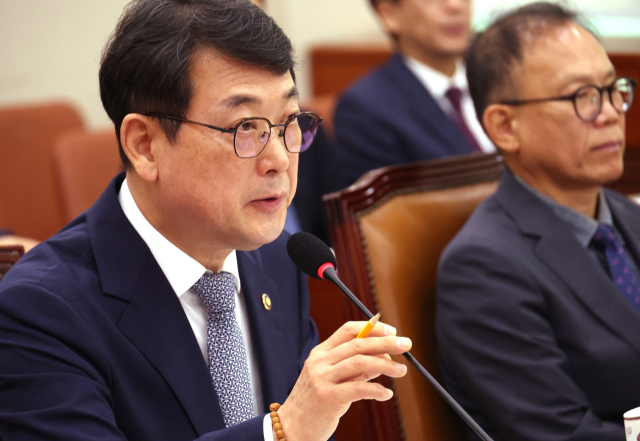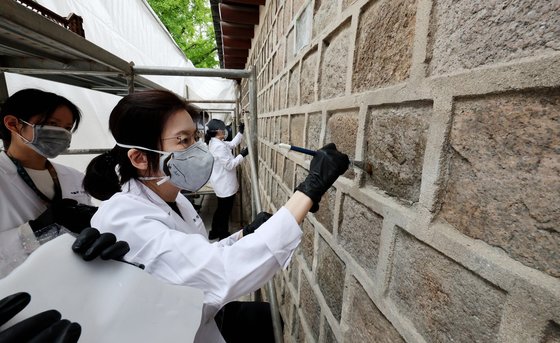
반출되어 일본의 ‘국보’로 지정된 한국 문화유산 3점 중 1점이 국내 환수가 추진 중이지만 10년 이상 진척이 되지 않아 난항인 것으로 파악되었다.
불법 약탈임을 입증하는 근거를 찾지 못한 것이 원인 중 하나인데, 이러한 ‘반출 원인 불명’은 해외에 나간 한국 문화유산을 되찾아오는 시작 단계부터 큰 걸림돌이기 때문에 정부가 규명에 적극적으로 나서야 한다는 지적이 제기되었다.
국회 문화체육관광위원회 박수현 의원(더불어민주당 / 충남 공주·부여·청양)이 10일 ‘국가유산청’(이하 국유청)으로부터 제출받은 ‘해외 유출 문화유산 현황’ 자료에 따르면, 일본 소재 한국 문화유산 중, 일본의 보물로 지정돼 있는 것은, ‘이도다완(井?茶碗)’ ,‘연지사종(蓮沚寺鐘)’, ‘고려국금자대장경(高麗?金字大??)’이다.
일본 국보로 지정된 시기는 각각 1951년, 1952년, 2018년으로 확인되었다. ‘이도다완’은 조선시대 제작된 다도용 다완, ‘연지사종’은 통일신라 시기에 제작된 연지사라는 절의 종, ‘고려국금자대장경’은 불교 경전으로 알려져 있다.
이중 임진왜란 때 일본에 의해 약탈된 것으로 알려진 ‘연지사종’에 대해, 국유청은 2013년부터 민간단체와 협력하여 국내 환수를 추진하고 있지만, 12년째 추진이 난항이다. ‘종’이 봉안된 일본 후쿠이현 ‘죠구신사’ 측과 소통채널을 유지하고 있는 정도이다.
국유청 관계자는 “‘연지사’의 국내 위치를 확인하지 못했고, 종이 일본 신사에 봉안된 시점이 임진왜란(1592년~1598년)중인 1597년이었다는 등의 정황증거들 외에는 ‘불법약탈’의 직접적인 증거를 찾지 못하고 있다”라고 밝혔다고 박 의원이 전했다.
의원실에 제출한 국유청 서면 답변에 의하면, “불법·반출이 확인된 문화유산에 대해 유관기관과 협조 등을 통해 반환요청을 진행한다”라고 하여 반출 원인 규명이 문화재 환수의 시작임을 인정하면서도 사실상 그 시작단계인 반출 원인 규명부터 막힌 상태로 12년째 진전을 보이지 못하고 있는 것이다.
박수현 의원은 “문화재 약탈의 불법 증거를 찾기 위한 ‘연구용역’이나 ‘전문가 의뢰’ 등의 노력을 해야 하는데 국유청의 대응이 미흡한 것으로 보인다”라며 “이는 ‘연지사종’ 사례에 한정된 것이 아니고 해외 반출된 국가유산 전체의 문제로 문화유산 환수 정책 전반에 대한 재점검과 개선이 필요하다”라고 지적했다.
현재 국유청이 해외 반출된 한국 문화유산으로 파악하고 있는 것은 총 24만 6,304점인데, 이중 일본에 나가 있는 것이 10만 9,801점으로 45%로 절대 다수를 차지한다. 다음으로 ?미국 6만 5,355점, 26.5% ?독일 1만 5,692점, 6.4% ?중국 1만 3,010점, 5.3%, ?영국 1만 2,805점, 5.2% 순이다.
박수현 의원은 “1990년 초부터 국유청이 해외 반출 한국 문화유산에 대한 리스트업 작업과 이를 통해 반출 원인 규명 사업을 일부 추진하고 있는 것으로 아는데, 이러한 조치로는 턱없이 부족하다”라며 “큰 틀의 중장기 ‘기본계획’ 수립, 케이스별로 적극적인 반출 원인규명을 위한 ‘연구용역 추진’, ‘관련 예산 확보’ 등 보다 적극적인 문화재 환수 조치에 나서야 한다”라고 강조했다.
*아래는 위 기사를 '구글 번역'으로 번역한 영문 기사의 [전문]입니다. '구글번역'은 이해도를 높이기를 위해 노력하고 있습니다. 영문 번역에 오류가 있을 수 있음을 전제로 합니다.<*The following is [the full text] of the English article translated by 'Google Translate'. 'Google Translate' is working hard to improve understanding. It is assumed that there may be errors in the English translation.>
Rep. Park Soo-hyun: "Three pieces of Korean cultural heritage that were taken out have become Japanese 'national treasures'"
Rep. Park: National Heritage Administration says it will return, but has not found evidence for illegally taking out the 'Yeonjisa Bell' for 12 years
246,304 pieces of Korean heritage overseas with unknown cause of removal
It has been found that one out of three pieces of Korean cultural heritage that were taken out and designated as a 'national treasure' in Japan is being pursued for domestic return, but there has been no progress for over 10 years, making it difficult.
One of the reasons is that there is no evidence to prove that it was illegally looted, and it has been pointed out that the government should actively take the lead in finding out the cause of removal, as this 'unknown cause of removal' is a major obstacle from the very beginning of retrieving Korean cultural heritage that has gone overseas.
According to the ‘Current Status of Cultural Heritage Displaced Abroad’ data submitted by the National Heritage Administration (hereafter referred to as the National Heritage Administration) to Rep. Park Soo-hyun of the National Assembly’s Culture, Sports, and Tourism Committee (Democratic Party of Korea / Gongju, Buyeo, Cheongyang, South Chungcheong Province) on the 10th, among the Korean cultural heritages located in Japan, the ‘Ido Tea Bowl (井?茶碗)’, ‘Yeonjisa Bell (蓮沚寺鐘)’, and ‘Goryeo National Gold-Printed Tripitaka Koreana (高麗?字大??)’ have been designated as Japanese national treasures.
The dates of their designation as Japanese national treasures were confirmed to be 1951, 1952, and 2018, respectively. ‘Ido Tea Bowl’ is a tea bowl made during the Joseon Dynasty for tea ceremonies, ‘Yeonjisa Bell’ is a bell from a temple called Yeonjisa made during the Unified Silla Dynasty, and ‘Goryeo National Gold-Printed Tripitaka Koreana’ is known to be a Buddhist scripture.
Regarding the ‘Yeonjisa Bell’, which is known to have been plundered by Japan during the Imjin War, the National Heritage Administration has been working with private organizations since 2013 to recover it domestically, but the process has been difficult for 12 years. They are only maintaining a communication channel with the ‘Jogu Shrine’ in Fukui Prefecture, Japan, where the ‘bell’ is enshrined.
According to Rep. Park, a National Heritage Administration official stated, “We have not been able to confirm the domestic location of ‘Yeonjisa’, and other than circumstantial evidence such as the fact that the bell was enshrined in a Japanese shrine in 1597 during the Imjin War (1592-1598), we have not found any direct evidence of ‘illegal plunder. ’” According to the written response from the National Heritage Administration submitted to the office of the lawmaker, “We will proceed with the return request through cooperation with relevant organizations regarding cultural heritage confirmed to have been illegally exported,” acknowledging that identifying the cause of exportation is the beginning of the recovery of cultural heritage, but in reality, the investigation of the cause of exportation, which is the starting stage, has been blocked and has not made any progress for 12 years.
Rep. Park Soo-hyun pointed out that “efforts such as ‘research services’ or ‘requests for experts’ should be made to find evidence of illegal plundering of cultural heritage, but the National Heritage Administration’s response seems to be inadequate,” and “This is not limited to the ‘Yeonjisa Bell’ case, but a problem with all national heritages exported overseas, and a reexamination and improvement of the overall cultural heritage recovery policy is necessary.”
Currently, the National Heritage Administration has identified a total of 246,304 Korean cultural heritages exported overseas, of which 109,801, or 45%, are in Japan, an absolute majority. Next are ?USA 65,355 points, 26.5% ?Germany 15,692 points, 6.4% ?China 13,010 points, 5.3% ?UK 12,805 points, 5.2%.
Rep. Park Soo-hyun said, “I understand that the National Heritage Administration has been working on listing Korean cultural heritage items taken overseas since the early 1990s and partially promoting projects to identify the cause of the exports through this, but these measures are woefully inadequate,” and emphasized, “We need to take more active measures to recover cultural properties, such as establishing a mid- to long-term ‘basic plan’ in a large framework, ‘promoting research services’ to actively identify the cause of exports on a case-by-case basis, and ‘securing related budgets. ’”


![[단독] ‘뉴라이트 의혹’ 3대 역사기관장, 예산 전용해 비공개 독도 방문](https://img.segye.com/content/image/2024/10/10/20241010522365.jpg)

